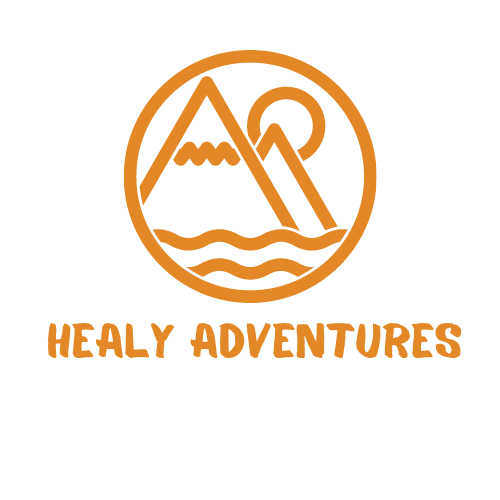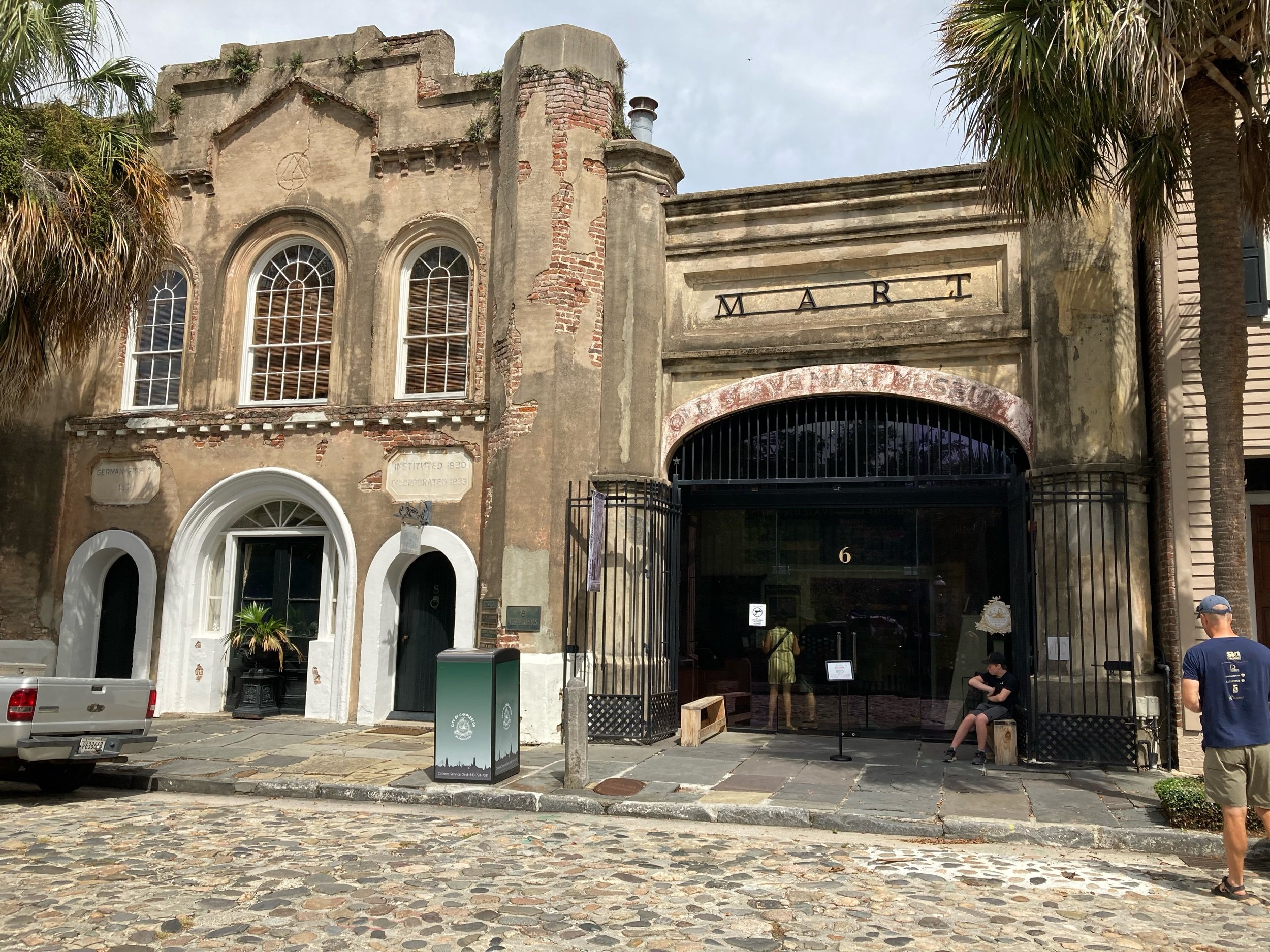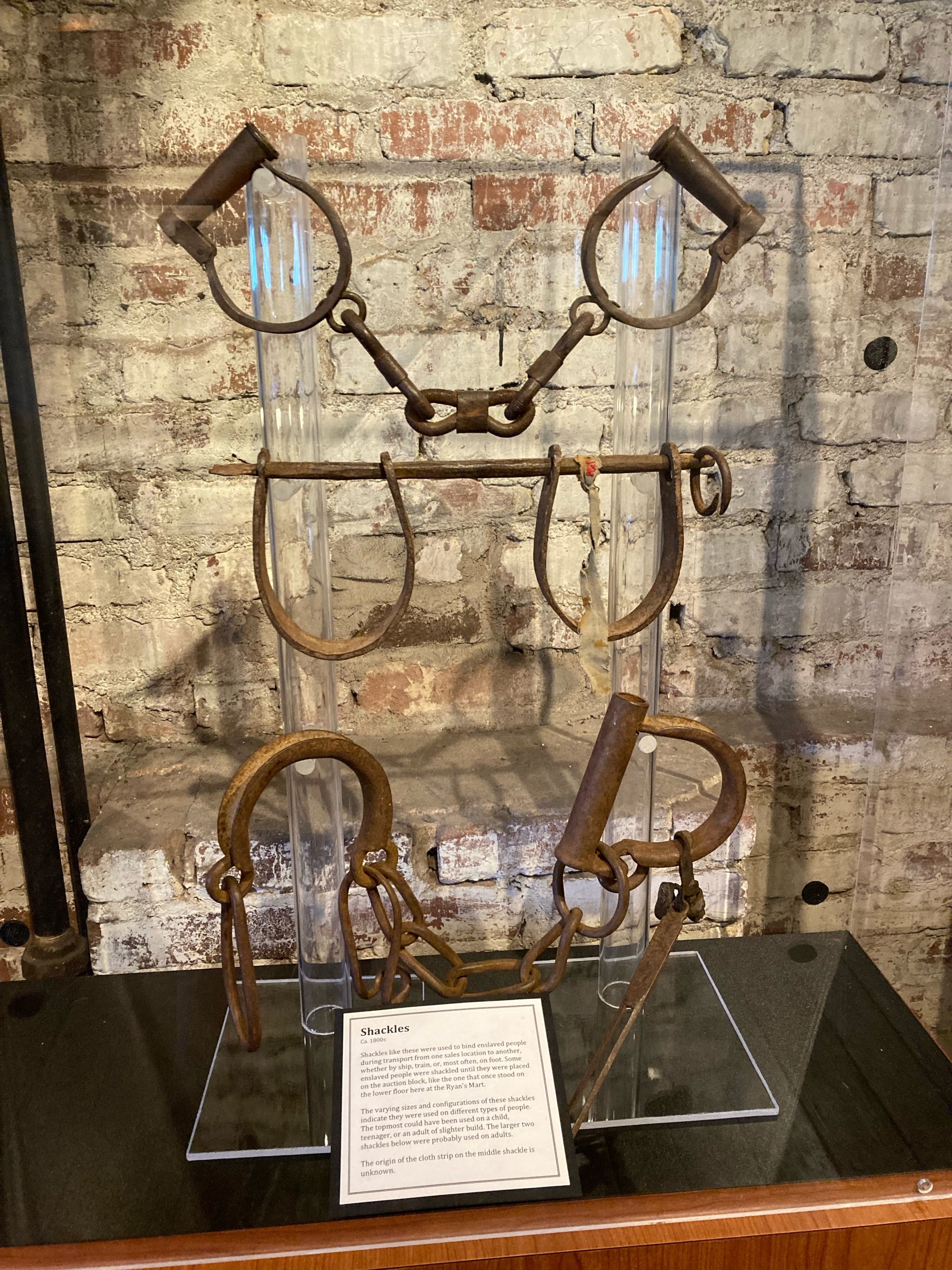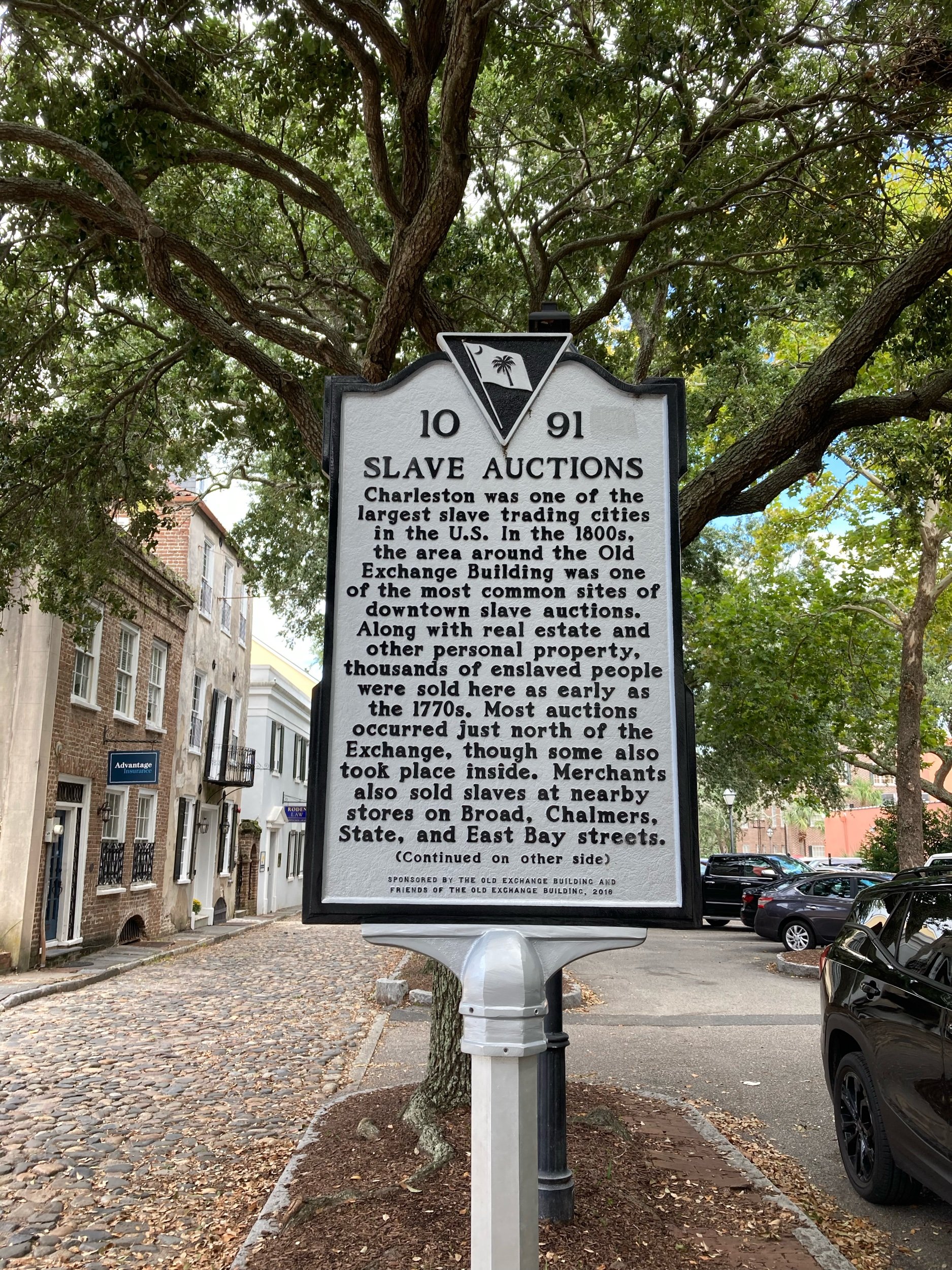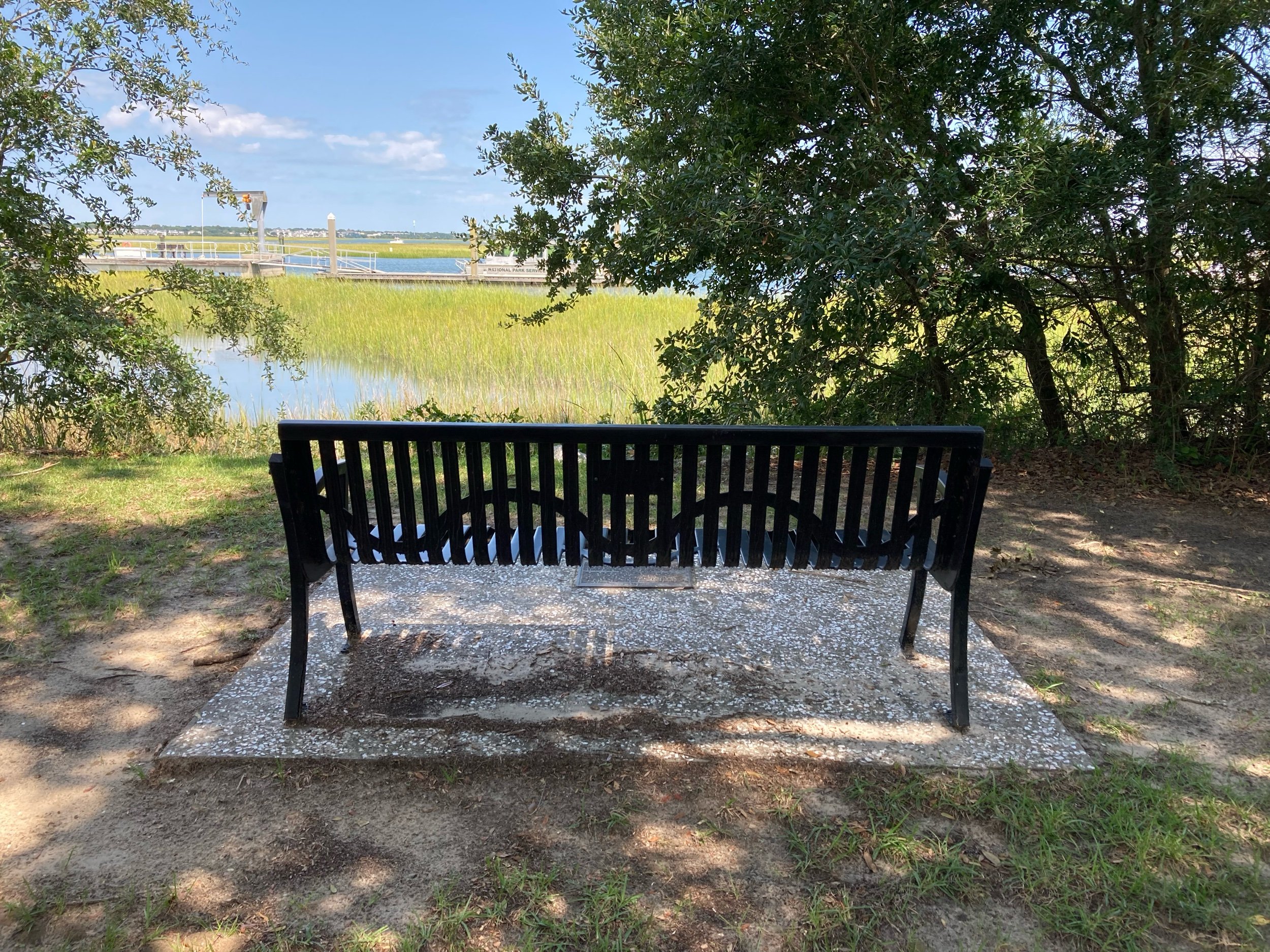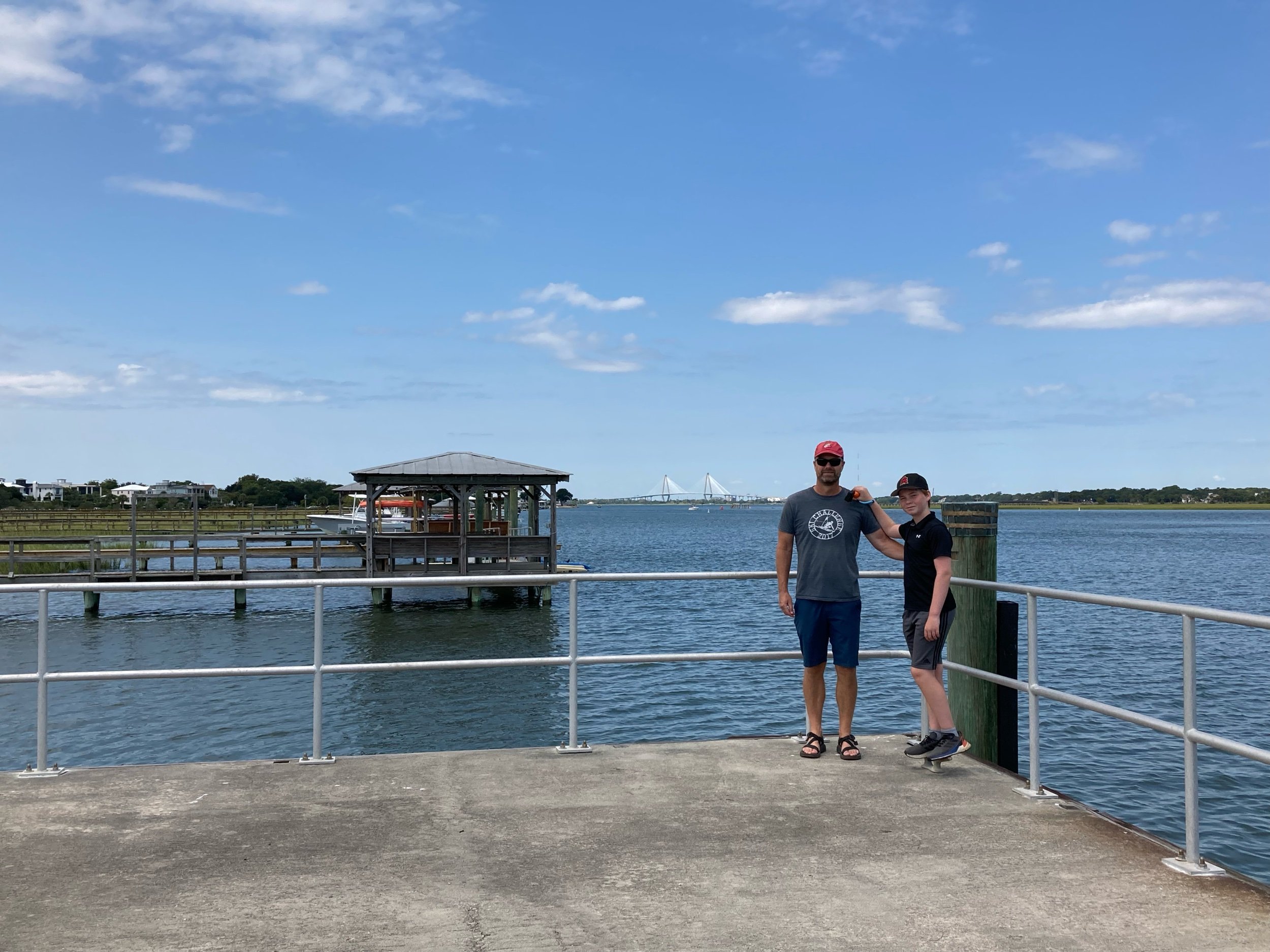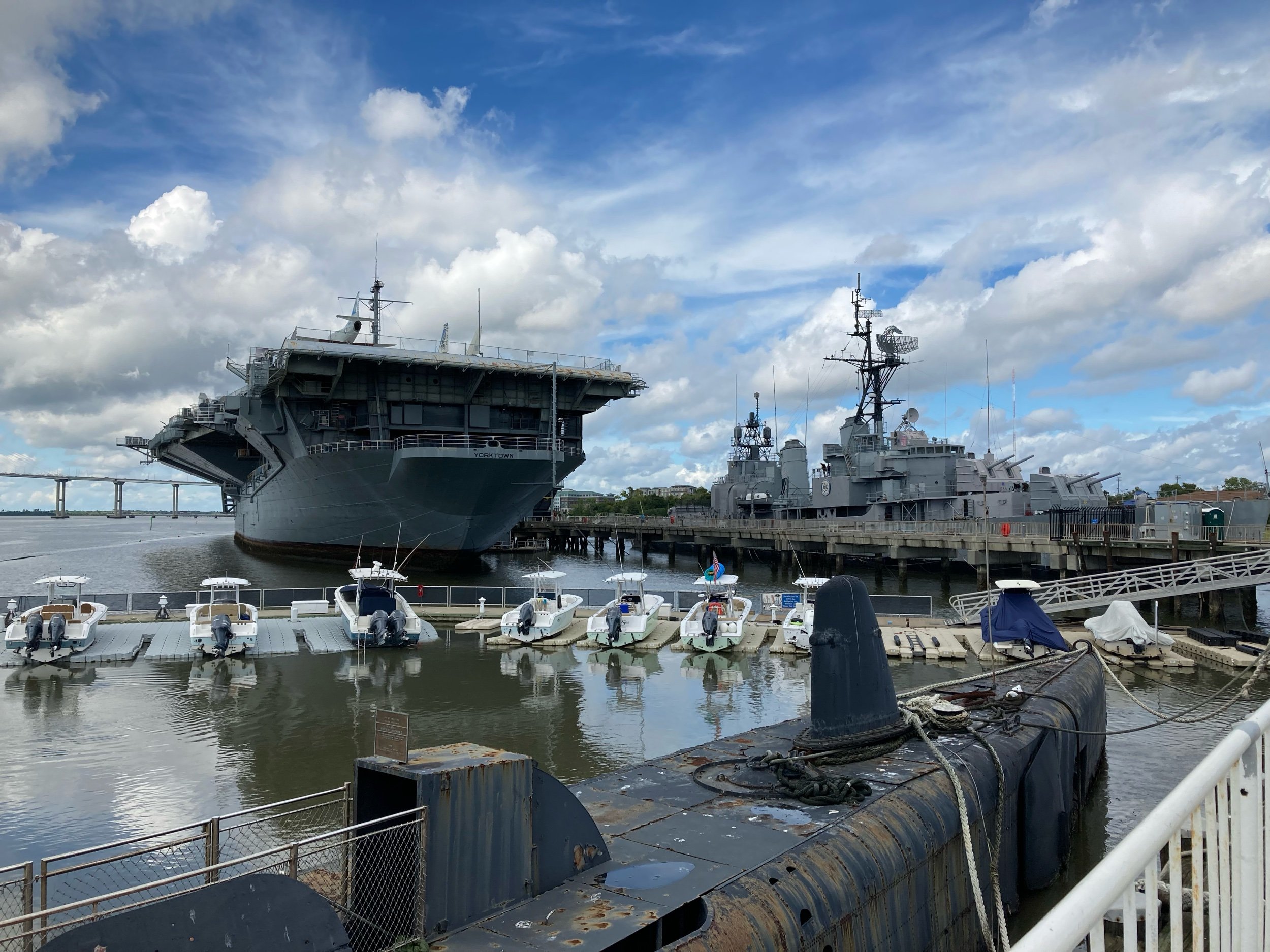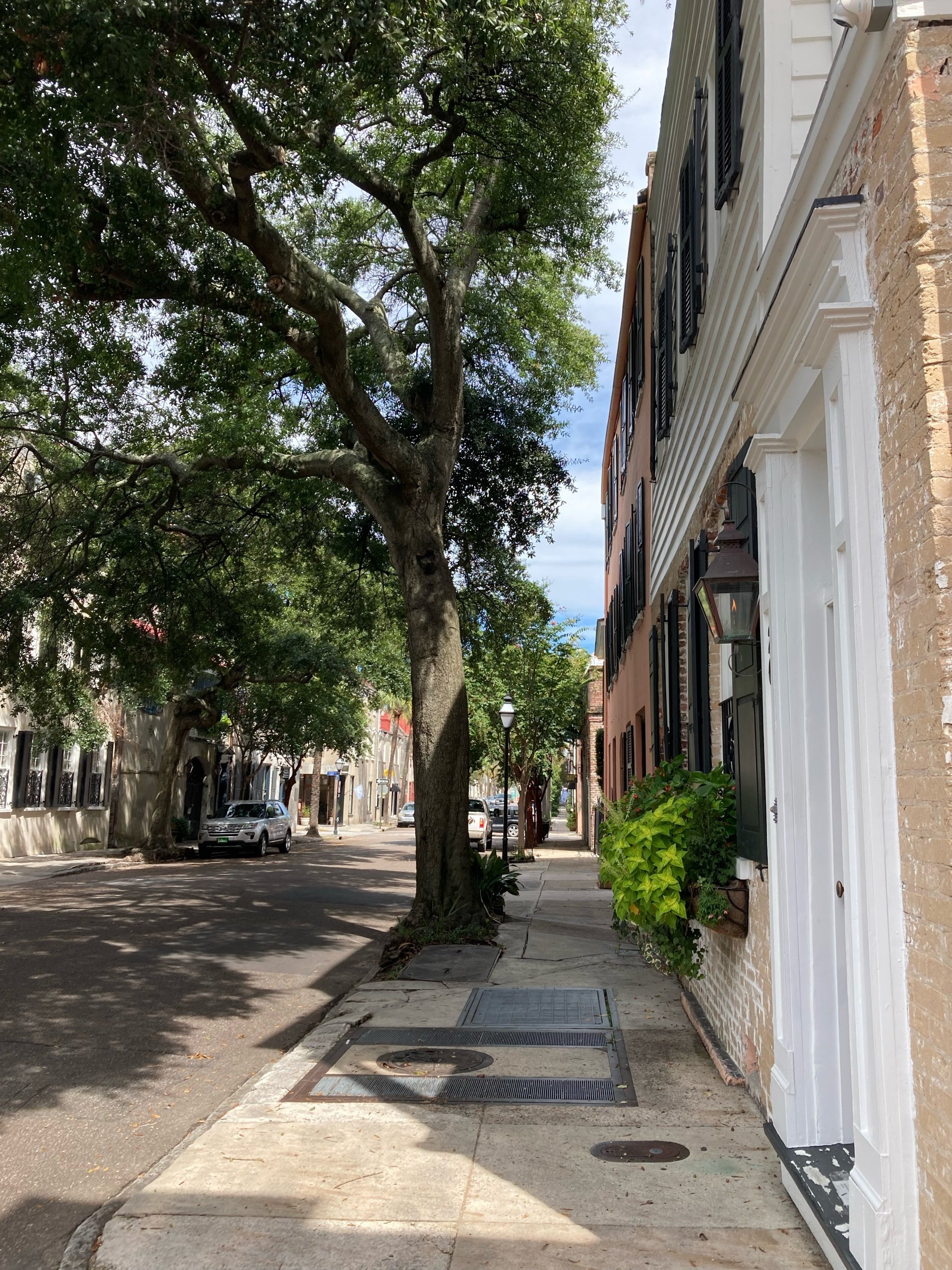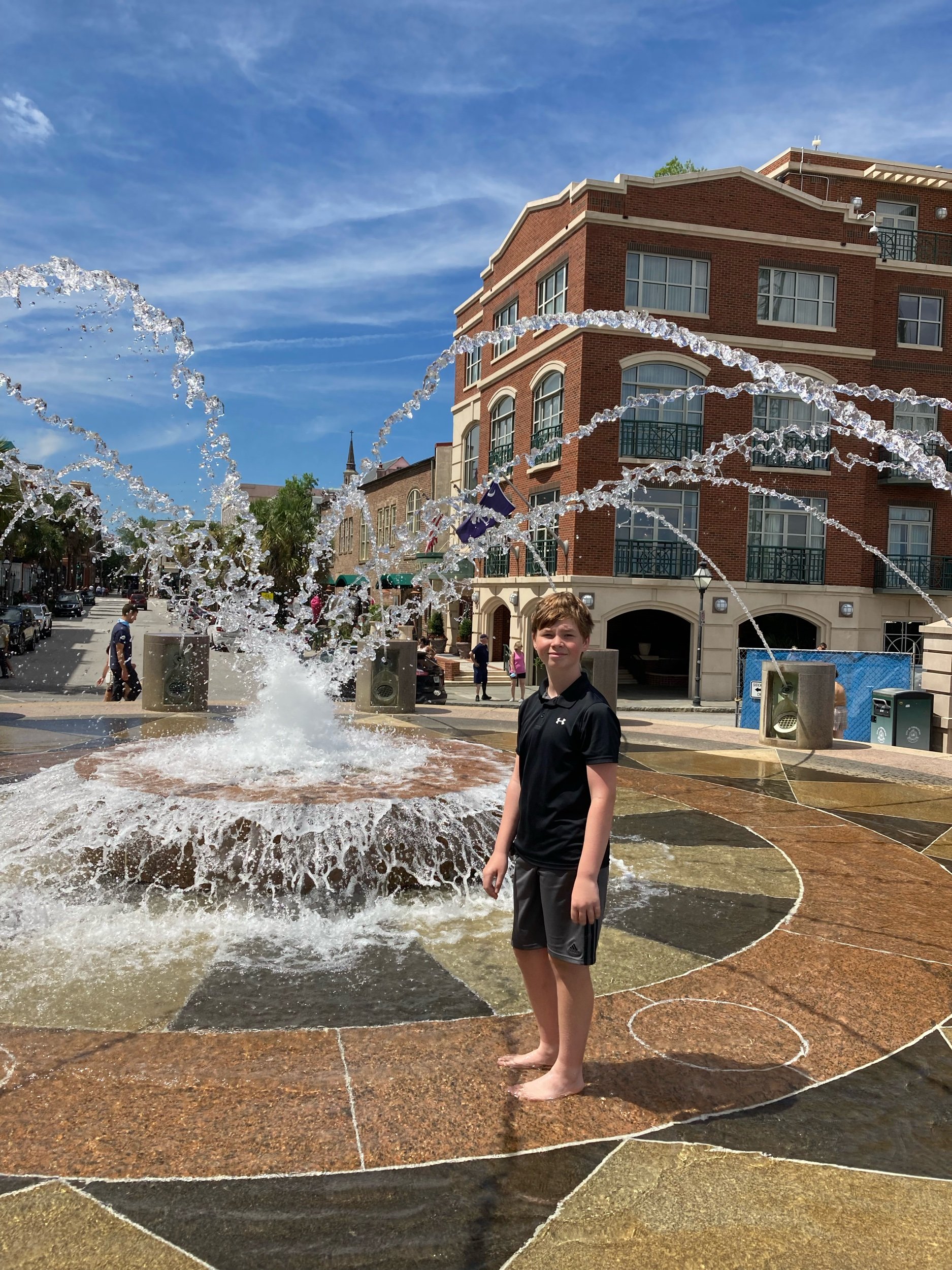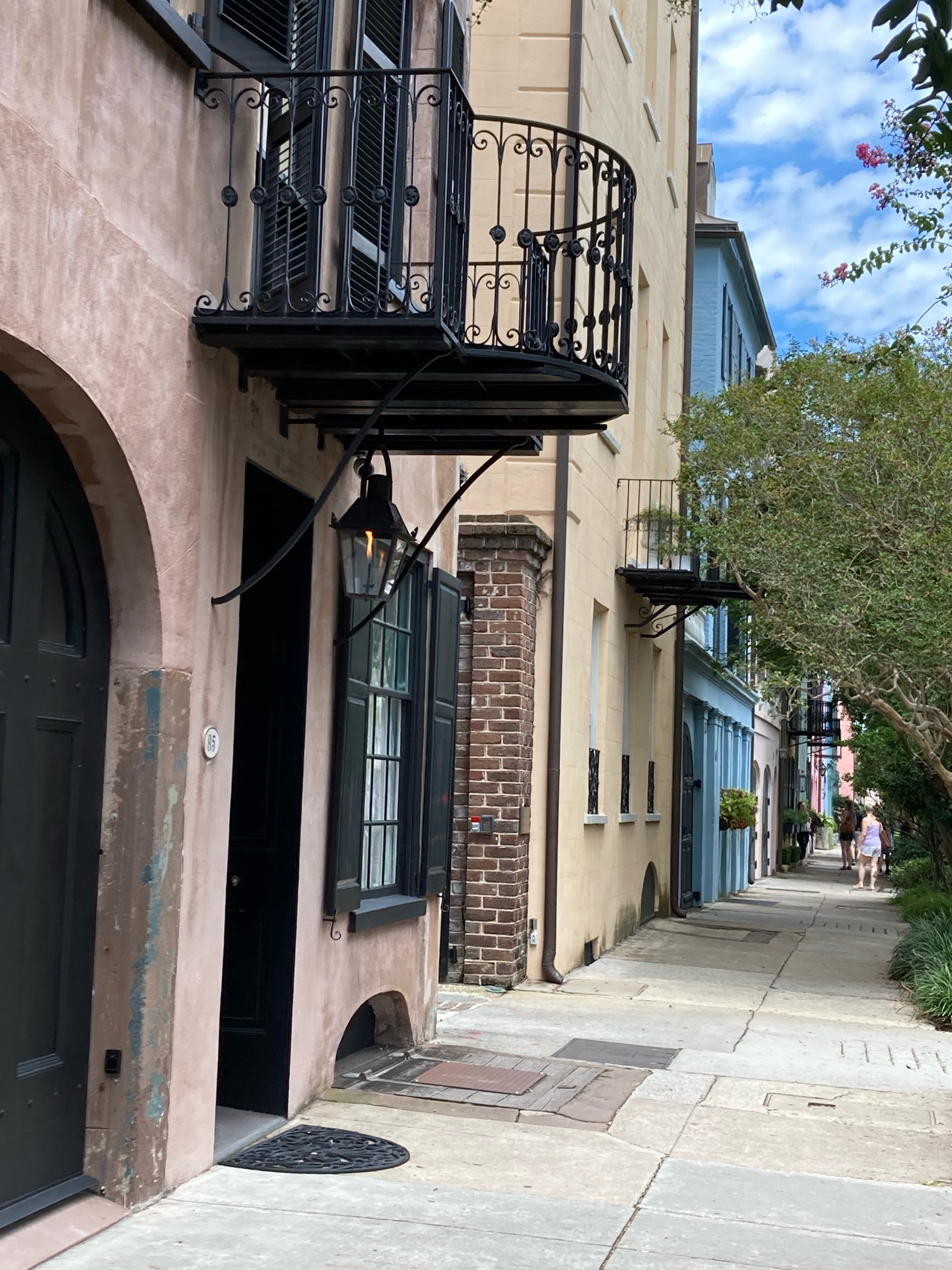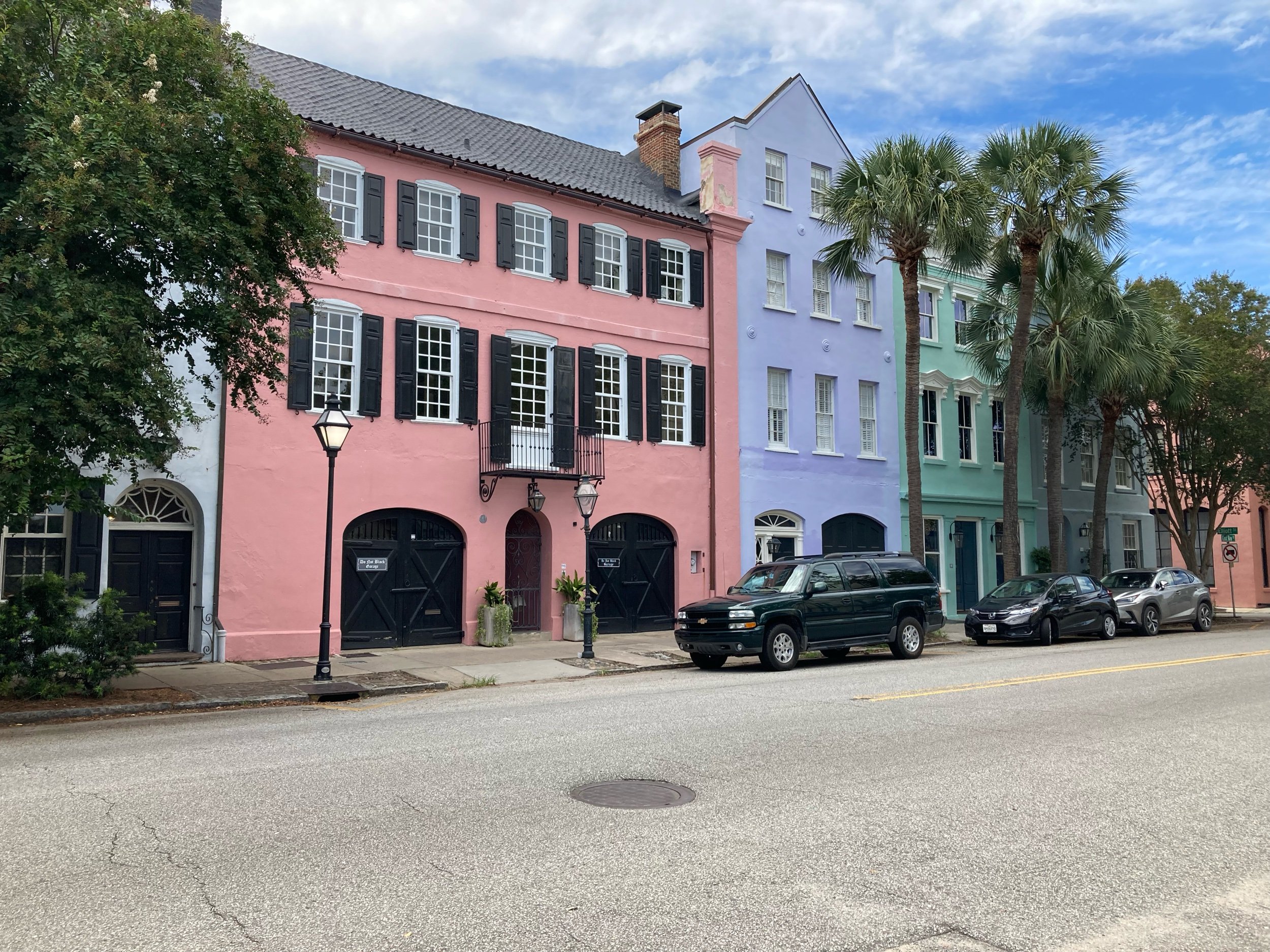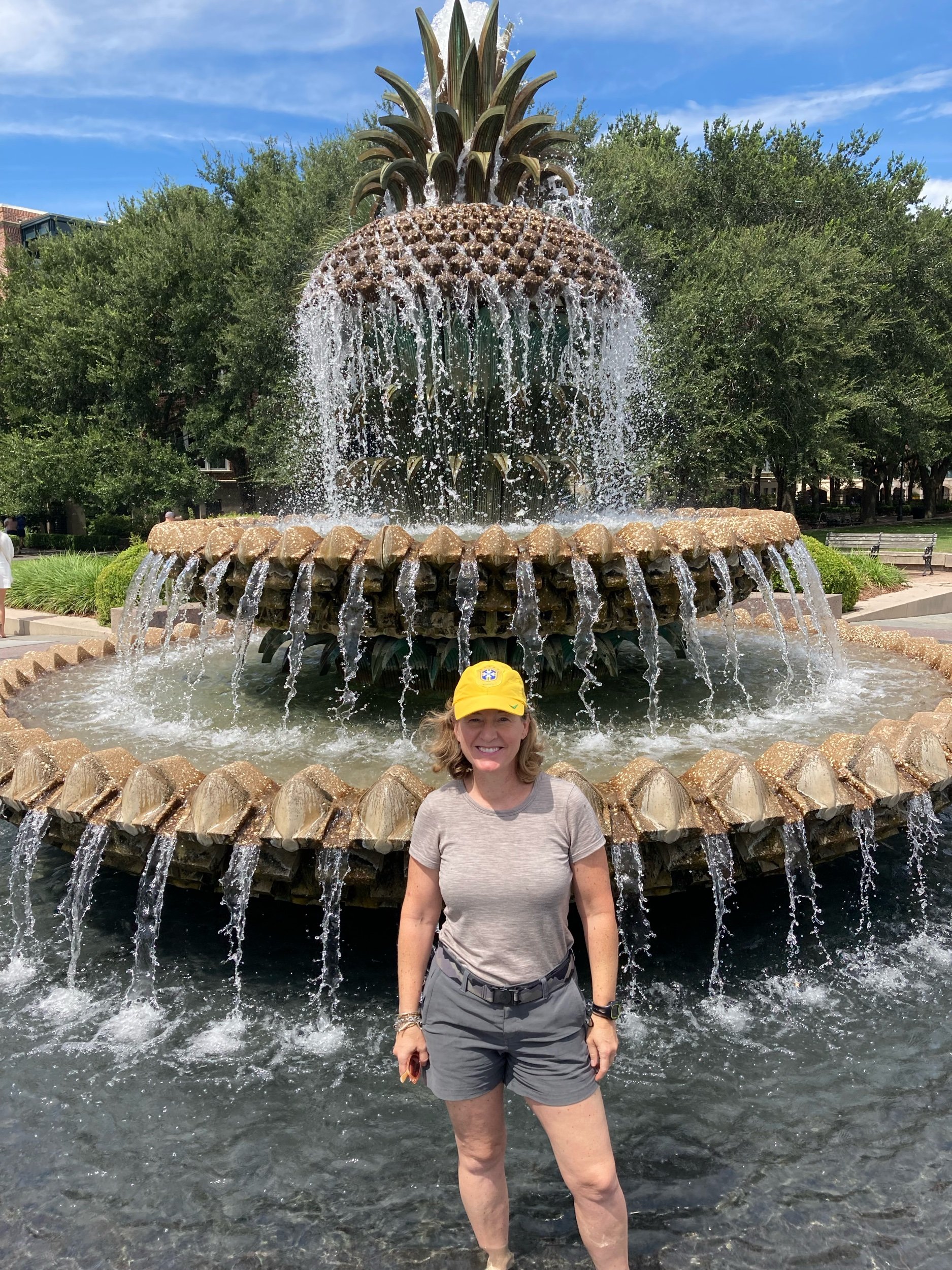Charleston, South Carolina
So much to love about Charleston - the weather, the views, the history (although there is a lot not to love too on that front). Charleston has been on my list of places to see for many years and we scheduled 6 days here although we could’ve spent more. Of course, on our first day, we had to visit the ocean, as we finally made it to the Atlantic coast! Owen has been fortunate enough to dip his toes into the Pacific, but not the Atlantic. We headed to Folly Beach, which wasn’t too far from our campground. Splashed around for a bit and then headed to a local spot, recommended by the friendly parking patroller.
The next day was rainy! As in LOTS of rain - street flooding type of rains. Thankfully the Jeep kept us moving. This happened to be a good day to tour Patriot Point’s Naval and Maritime museum, hope to the USS Yorktown aircraft carrier, the USS Laffey (WW2 destroyer ship) and the USS Clamagore (Cold War era submarine). We spent all day here and Owen’s YouTube video has a lot of video of our visit. The aircraft carrier has seen a ton of action in many different wars but most notably in WW2. The tour of the carrier is very well done, and the memorial part of the museum is a must-see as well. Bring a lunch - not much for food options here and you’ll want a whole day (especially if you’re a history buff and enjoy these types of visits). I actually enjoyed it more than I thought I would.
We did not take a walking tour of Charleston, which is something that is probably a good idea for a future visit….however, we can’t do everything on this trip and we really wanted to explore the area on our own time. We walked through the Charleston City Market, which is more or less a place pandering to tourists these days. There are some homemade artisan items of interest, but for the most part, seemed like regular merchandise you could really buy anywhere. The atmosphere was fun and the building itself is the original public market from 1807, where the initial goods were meats, vegetables, fish, etc. A popular attraction, but we didn’t spend much time there.
We did seek out the Old Slave Mart. This museum tells the story of the slave trade in Charleston from 1856 - 1863. I’d recommend reading more about this building here, as this level of detail wasn’t really included in the history books. The museum is housed in the original area where the individuals were put on “display” for auction to the traders, called the “Showroom.” These individuals were African-Americans, uprooted from the countryside and brought to this showroom - often resulting in the destruction of families as they were often separated due to these events. If you haven’t watched 12 Years a Slave, this movie brings to life what happened in these showrooms, and how families and individuals were traumatized. Although the importation of slaves ended in 1808, a network of local and regional slave traders kept American slavery very much alive.
Charleston was a major city in the US for selling and reselling slaves. “Ryan’s Mart” as the Old Slave Mart was known, was built in 1856 and actively sold people for SEVEN years. The last person sold here walked through the doors in November1863. The price of a person varied. Often slaves were divided into different classes, and these were the going prices in 1860:
Number One Men ($1400 - $1500)
Second rate or “ordinary” men ($1100 - $1250)
Number One Women ($1275 - 1375)
Second rate or “ordinary” girls ($800 - $1100)
In 2007, that value would have been $36,000 for a Number One Man., and $21,000 for second rate girls.
During our time in Ninety-Six, I met a woman who went to Charleston a lot, and she told us “You have to go visit the bench by the bay on Sullivan’s Island.” Supposedly, this very simple and non-descript bench signifies the place where over half of the individuals from Africa initially passed through into North America for purposes of the slave trade. At this part of the individual’s journey, it was known as the “middle passage.” Originally, the individuals were put onto the boats in Africa - in horrible living conditions (it is estimated at least 1/3 of the people died in transport). The first passage went from Africa to Europe. From Europe, to North America (middle passage), and then from North America to South America. We went looking for this bench, and there isn’t a large shrine or signs noting its significance. In fact, it sits under a shaded tree not too far from a large parking lot, which is used for the Fort Moultrie National Park site. Personally, I thought it was a very moving place to be as we took in the history of all that happened here.
While we were in this location, we also visited Fort Moultrie, which is known in conjunction with Fort Sumter - the place where the Civil War battle broke out in June 1861.
While we took in a lot of heavy history, we also enjoyed the beauty of what Charleston had to offer including the Pineapple Fountain, the beaches and wandering around the historic districts. We also really enjoyed the campground at James Island County Park - and Owen made a great video to prove it! Start at 25:50 to see the park, although he includes a lot of footage from Patriot’s Park and Fort Moultrie in the video as well.
Dates of this trip:
Next stop: Savannah, Georgia!
